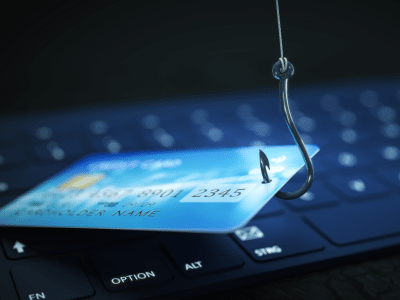We reflect on the state of cybersecurity as we move into the new year. Learn what you can expect moving forward and resources to help you protect your business.
1. Ransomware Will Continue to be an Issue
The rise of ransomware over the past five years is tremendous. Verizon reported that, in 2021, there was a 13% increase and accounted for 25% of breaches. This steady rise is likely to continue.
In fact, cyber attacks may be pushed harder as an economic downturn drives cybercriminals to launch more devastating attacks. Leading ransomware groups, such as LockBit, continue to offer progressive products with targeted services – making attacks more successful.
Learn more about the dangers of ransomware attacks and how to avoid them.
2. The Threat of Global Recession
While a recession may not be a direct cybersecurity threat it will be a massive factor as we move into 2023. The pressure for businesses to maintain profits means tough decisions to cut costs will be made. Cybersecurity should not be on the list.
A global recession will impact everyone – including cybercriminals. New tactics and an increase in attacks are likely as they attempt to keep up with their own financial demands. Making cybersecurity necessary to safeguard your future.
Organizations of all sizes can outsource cybersecurity to reduce the financial burden. Investing in a Managed Security Service Provider (MSSP), like Aligned, will reduce the cybersecurity costs and risks during a sustained period of weak growth.
Learn how working with the right managed service provider can help your business succeed.
It’s worth mentioning that a recession can also lead to some of your staff experiencing financial difficulties – looking for ways to make ends meet. This struggle can put your organization at risk of occupational fraud.
Learn how to detect occupational fraud and how to protect against it.
An economic turndown is an opportunity in disguise. Strengthen your business with these digital transformation tips.
3. Need for Essential Business & Infrastructure Security
Every business should have cybersecurity. However, experts hypothesize that operational technology cyber attacks against essential businesses and critical infrastructure, such as hospitals and utilities, will take the biggest hit in the coming years.
Businesses in these industries should employ sufficient cybersecurity to protect themselves as threat actors evolve their methods of approach.
Discover the top 10 foundational cybersecurity elements every business needs. Plus, the six components to employ after your foundation is in place.
Learn about new and upcoming cybersecurity regulations like CIRCIA, CMMC, SSDF, and more.
4. World Events Drive More Cyber Threats
The threat landscape has grown more polarized after Russia’s invasion of Ukraine. U.S. leaders urged Americans to strengthen their cyber defenses after revealing that Russia could be actively exploring options for potential cyber attacks.
KillNet, a pro-Russian group that gained notoriety through denial of service (DDoS) attacks against pro-NATO countries and organizations, is the most successful threat so far. Businesses need to be on alert for politically motivated attacks as tensions continue.
Learn more about the threat of Russian cyber attacks.
5. Phishing Attack Techniques
New phishing methods are constantly being created because this cyber attack continues to be so effective. There’s a technique called clone phishing.
Have you ever sent out an email with information you forgot to include, and had to send a follow up email? Cybercriminals are imitating these follow-up emails to trick you.
The scam starts by gaining access to a trusted, legitimate organization’s email account. They locate an email previously sent to you and clone it to look like a standard follow up email.
Threat actors then add text claiming the original email was missing an attachment with important information. Downloading the attachment installs malware that allows cybercriminals access to your information.
Learn more about phishing and how to protect your business from these prolific attacks.
6. OTP Bypass Threat & Monetized Criminal Services
The underground ecosystem has experienced great success in 2022. In fact, threat actors offered monetized criminal services this year and saw great success. It’s likely that this will continue as the demand increases. How does this impact you?
As an example, most people understand that multi-factor authentication (MFA) is an important security measure that everyone should use when available. While it is a crucial element to cybersecurity best practices, it’s not an impenetrable force.
Threat actors are using one time passcode/password bypass (OTP bypass) services to get around this added layer of security – making businesses more vulnerable.
This drives home the importance of managing your risks with a solid cybersecurity foundation. Refer to our list of 16 cybersecurity elements your small to medium-sized business needs to stay protected.
Defend Your Small Business with Knowledge
Armed with knowledge, you possess the power to defend your business from future cybersecurity threats.
We regularly share blogs aimed to help SMB leaders grow their business through effective IT and cybersecurity. Subscribe to our monthly newsletter to get exclusive IT and cybersecurity insights delivered right to your email.



